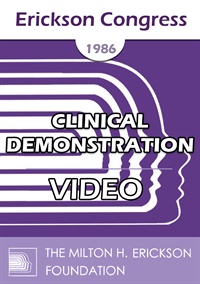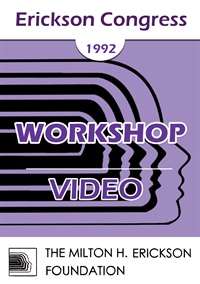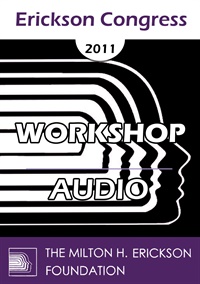
- Average Rating:
- Not yet rated
- Topic Areas:
- Depression | Hypnosis | Family Therapy | Workshops
- Categories:
- Erickson Congress | Erickson Congress 2011
- Faculty:
- Camillo Loriedo, MD, PhD
- Duration:
- 59 Minutes
- Format:
- Audio Only
- Original Program Date:
- Dec 07, 2011
- Short Description:
- Depressive patients are described by Lynn Hoffman as Sleeping Giants, that cannot be awaken by powerful efforts, while they are ready to arouse because of the delicate stimulus of a child. The role played by the non-depressed family members in the development, as well as in the treatment of depression can be considered very relevant. Some useful principles for utilizing hypnosis with depressive individuals and families as well as clinical examples will be presented together with both specific techniques and specific pitfalls that can be expected in the course of the therapeutic process.
- Price:
- $20.00 - Base Price
Tags: Depression Family Therapy Hypnosis
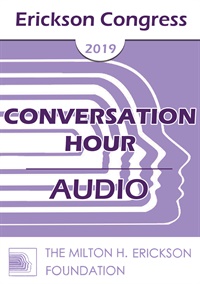
- Average Rating:
- Not yet rated
- Topic Areas:
- Conversation Hours | Eating Disorders | Ericksonian Hypnosis and Therapy Techniques | Anorexia | Family Therapy
- Categories:
- Erickson Congress | Erickson Congress 2019
- Faculty:
- Camillo Loriedo, MD, PhD
- Duration:
- 1 Hour 1 Minutes
- Format:
- Audio Only
- Original Program Date:
- Dec 14, 2019
- Short Description:
- Eating Disorders are a good example of massive interdependence among family members. Salvador Minuchin described families with Anorexia Nervosa as enmeshed families, and the interdependence it is certainly the base for enmeshment. Recent studies as well as more extended clinical experiences demonstrate that although bulimia appears to produce less reciprocal involvement, and some other form of apparent disengagement, we really can say that reciprocal interdependence in the family it always present, even if it assumes more hidden and complex forms.
- Price:
- $15.00 - Base Price

- Average Rating:
- Not yet rated
- Topic Areas:
- Short Courses | Hypnotherapy | Aging and Mortality | Communication | Family Therapy
- Categories:
- Erickson Congress | Erickson Congress 2019
- Faculty:
- Stefan Hammel, MTh
- Duration:
- 1 Hour 29 Minutes
- Format:
- Audio Only
- Original Program Date:
- Dec 12, 2019
- Short Description:
- What can we do for dying people and their families in addition to palliative care? What is helpful to communicate during the last hours of life? In this workshop we bring integrate the millennium-old pictorial traditions of religion with techniques of hypnotherapy including pacing and leading, utilizing metaphors, and the evocation of values and convictions of dying patients with their families.
- Price:
- $15.00 - Base Price
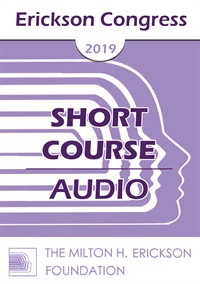
- Average Rating:
- Not yet rated
- Topic Areas:
- Short Courses | Children and Adolescent Therapy | Ericksonian Psychotherapy | Psychotherapy | Ericksonian Hypnosis and Therapy Techniques | Family Therapy
- Categories:
- Erickson Congress | Erickson Congress 2019
- Faculty:
- Maria Escalante de Smith, MA
- Duration:
- 1 Hour
- Format:
- Audio Only
- Original Program Date:
- Dec 12, 2019
- Short Description:
- Ericksonian Psychotherapy emphasizes the importance of utilization. When treating children, as therapists, we need to keep in mind that we also need to utilize whatever happens during therapy whether that can be a given behavior, if the child brings a toy for the consultation, their likes and also provide them with a wide array of resources they can access during therapy.
- Price:
- $15.00 - Base Price
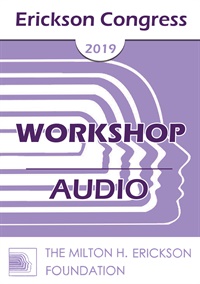
- Average Rating:
- Not yet rated
- Topic Areas:
- Workshops | Anxiety | Family Therapy | Homework | Children and Adolescent Therapy | Experiential Therapy
- Categories:
- Erickson Congress | Erickson Congress 2019
- Faculty:
- Lynn Lyons, LICSW
- Duration:
- 1 Hour 56 Minutes
- Format:
- Audio Only
- Original Program Date:
- Dec 13, 2019
- Short Description:
- After decades of working with anxious children and teens, I have two unshakable truths: families MUST be involved in treatment and anxious patterns are shifted through experiential learning. Working with the FOUR critical concepts to manage anxiety in families and the SIX patterns that must be interrupted, this workshop will describe HOW to create active, engaging assignments for families to do between sessions and describe the TEN favorites that I return to again and again.
- Price:
- $15.00 - Base Price
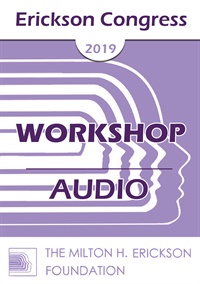
- Average Rating:
- Not yet rated
- Topic Areas:
- Workshops | Autism | Hypnosis | Children and Adolescent Therapy | Family Therapy | Communication
- Categories:
- Erickson Congress | Erickson Congress 2019
- Faculty:
- Laurence Sugarman, MD
- Duration:
- 1 Hour 38 Minutes
- Format:
- Audio Only
- Original Program Date:
- Dec 13, 2019
- Short Description:
- Hypnotic conversations explore, evoke, engage and reallocate and experiential resources. Having hypnotic conversations with young people who meet criteria for autism spectrum disorder (ASD), presents challenges both in relating and accessing resources. The challenge extends to helping their parents to better parent by seeing them as resourceful and capable.
- Price:
- $15.00 - Base Price
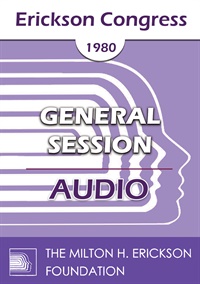
- Average Rating:
- Not yet rated
- Topic Areas:
- General Sessions | Ericksonian Hypnosis and Therapy Techniques | Family Therapy
- Categories:
- Erickson Congress | Erickson Congress 1980
- Faculty:
- Alan F Leveton, MD | Herbert S. Lustig, MD | Carrell Dammann, PhD | David Rigler, PhD
- Duration:
- 1:39:44
- Format:
- Audio Only
- Original Program Date:
- Dec 07, 1980
- Short Description:
- IC80 General Session 13 - Erickson and Family Therapy - Alan F Leveton, MD, Herbert S Lustig, MD, Carrell Dammann, PHD, David Rigler, PHD
- Price:
- $15.00 - Base Price
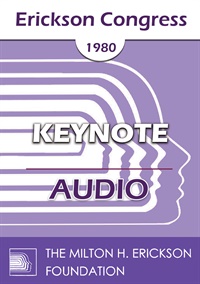
- Average Rating:
- Not yet rated
- Topic Areas:
- Keynotes | Family Therapy | Hypnosis
- Categories:
- Erickson Congress | Erickson Congress 1980
- Faculty:
- Carl Whitaker, MD
- Duration:
- 47:33
- Format:
- Audio Only
- Original Program Date:
- Dec 07, 1980
- Short Description:
- IC80 Keynote 02 - Hypnosis and Depth Therapy with the Family - Carl A Whitaker, MD
- Price:
- $15.00 - Base Price
- Average Rating:
- Not yet rated
- Topic Areas:
- Clinical Demonstrations | Family Therapy | Hypnosis
- Categories:
- Erickson Congress | Erickson Congress 1986
- Faculty:
- Stephen Lankton, MSW
- Course Levels:
- Master Degree or Higher in Health-Related Field
- Duration:
- 1:01:21
- Format:
- Audio and Video
- Original Program Date:
- Dec 05, 1986
- Short Description:
- IC86 Clinical Demonstration 06 - Family Therapy and Hypnosis - Stephen R Lankton, ACSW
- Price:
- $29.00 - Base Price
- Average Rating:
- Not yet rated
- Topic Areas:
- Workshops | Family Therapy | Hypnotic Induction | Hypnosis
- Categories:
- Erickson Congress | Erickson Congress 1992
- Faculty:
- Camillo Loriedo, MD, PhD
- Course Levels:
- Master Degree or Higher in Health-Related Field
- Duration:
- 54:25
- Format:
- Audio and Video
- Original Program Date:
- Dec 02, 1992
- Short Description:
- IC92 Workshop 13a - Demonstrations I - Family Hypnotic Induction and Therapy - Camillo Loriedo, MD
- Price:
-
Sale is $29.00
price reduced from Base Price - $59.00
Please wait ...


